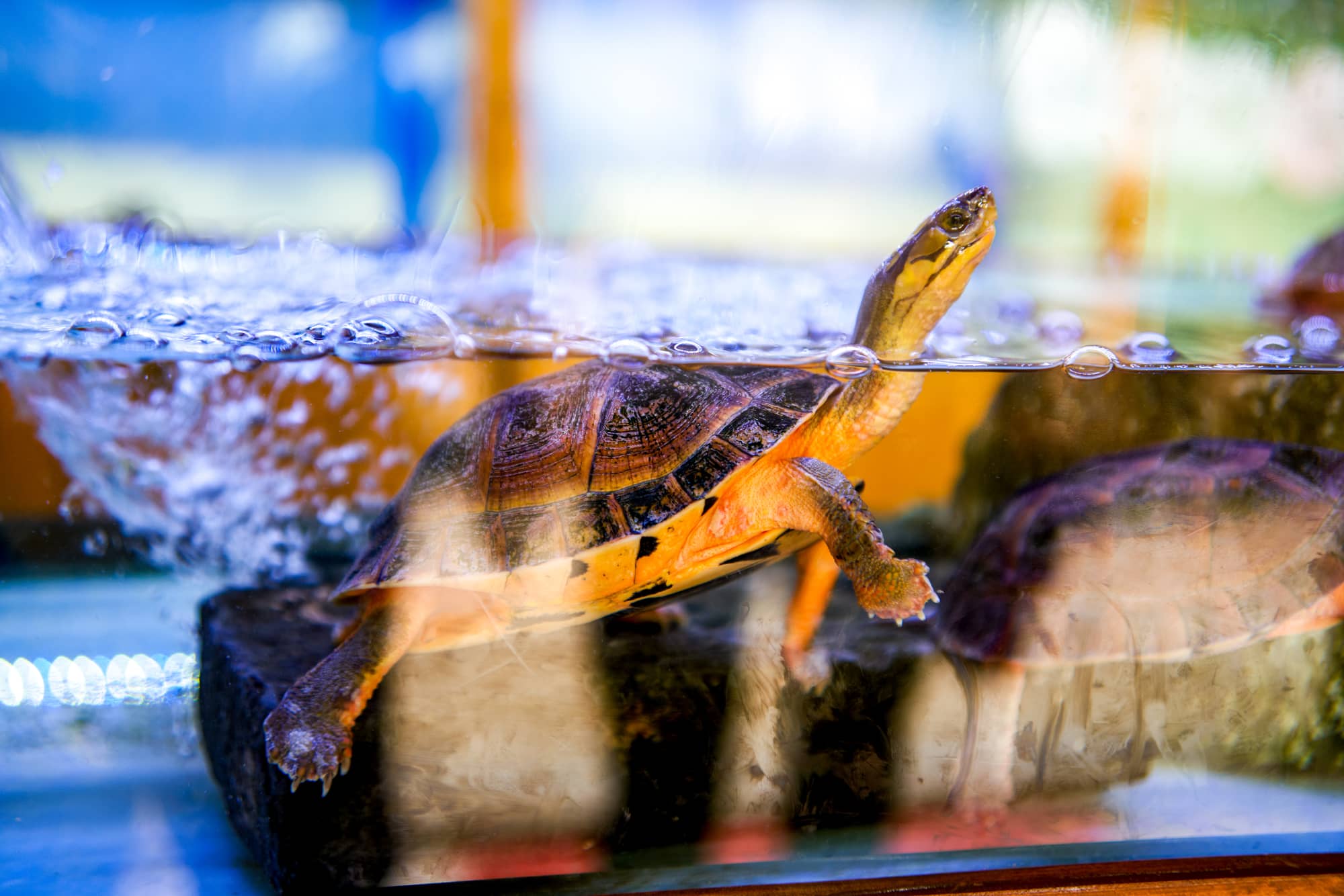You’re considering setting up an indoor turtle enclosure and you want to ensure that your turtle has a comfortable and suitable substrate. With so many options available, it can be overwhelming to determine which substrate will best meet your turtle’s needs. From sand to gravel to moss, this article will explore the different substrate options available for indoor turtle enclosures. By understanding the pros and cons of each option, you’ll be able to make an informed decision and create a perfect habitat for your shelled companion.
Introduction
When it comes to setting up an indoor turtle enclosure, choosing the right substrate is essential. Substrate refers to the material or layer that covers the bottom of the enclosure, providing a natural and comfortable environment for your turtle. The type of substrate you choose can greatly impact your turtle’s well-being and overall quality of life. In this article, we will explore the importance of substrate for indoor turtle enclosures, the benefits of using the right substrate, and important considerations when selecting the perfect substrate option for your turtle.
Why substrate is important for indoor turtle enclosures
The substrate plays a crucial role in replicating the natural environment of turtles. In the wild, turtles have access to various types of substrates, ranging from soil and sand to gravel and organic materials. These substrates offer different textures, densities, and temperatures, allowing turtles to engage in natural behaviors such as digging, burrowing, and foraging. By providing a suitable substrate in your indoor turtle enclosure, you are promoting a more natural and enriching environment for your pet.
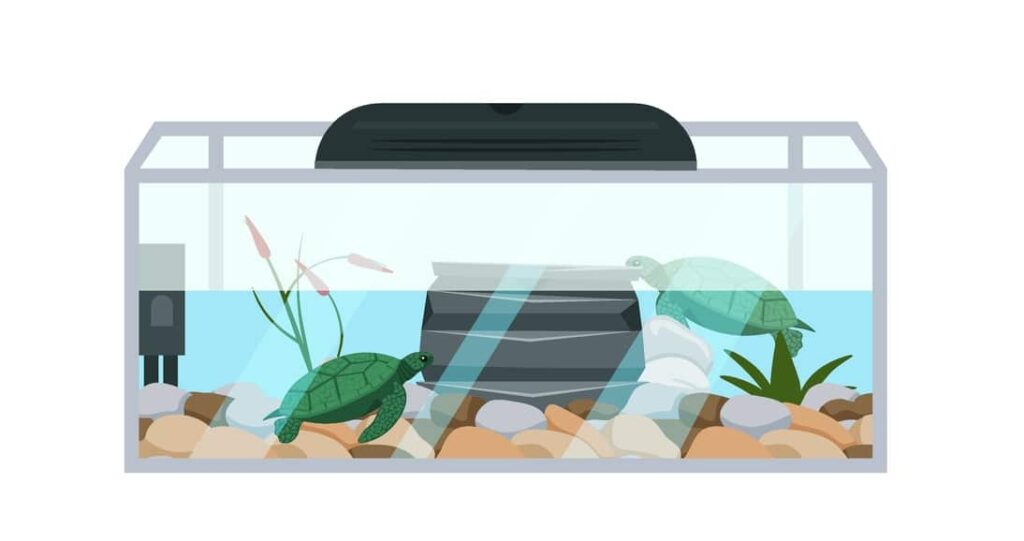
Benefits of using the right substrate
Using the right substrate in your indoor turtle enclosure can have numerous benefits for your turtle’s health and well-being. Firstly, a suitable substrate mimics the natural habitat of turtles, reducing stress and promoting natural behaviors. This can enhance their mental stimulation and overall quality of life. Secondly, certain substrates, such as soil or sand, enable turtles to dig and burrow, which is essential for nesting and egg-laying. Additionally, the right substrate can help maintain proper humidity levels and assist in waste management, making it easier to clean and maintain the enclosure. Ultimately, providing the right substrate for your turtle can contribute to their overall health, comfort, and happiness.
Considerations when choosing substrate
Before selecting a substrate for your indoor turtle enclosure, there are several important considerations to keep in mind. Firstly, you should consider the natural habitat and preferences of the turtle species you are keeping. Different species have different substrate requirements, so it’s important to research and choose a substrate that closely matches their natural environment. Secondly, you should consider the ease of cleaning and maintenance. Some substrates are easier to clean and replace than others, so choose one that fits your personal preference and schedule. Finally, you should consider your budget. Some substrates can be more expensive than others, so it’s important to find a balance between cost and quality that works for you.
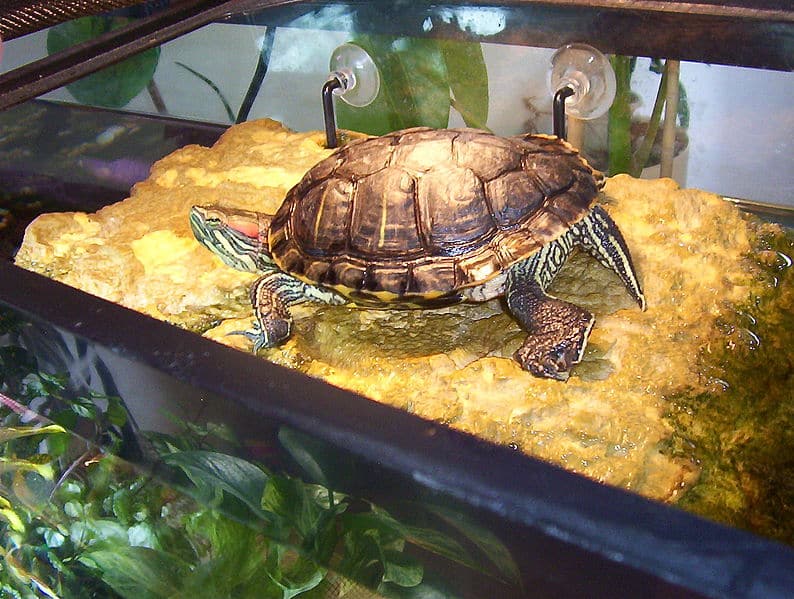
1. Natural Substrates
1.1 Soil
Soil is a common and versatile substrate option for indoor turtle enclosures. It closely replicates the natural environment of many turtle species, particularly those found in woodland or forest habitats. Soil allows turtles to dig, burrow, and even create nesting sites. It also helps maintain humidity levels and provides a natural texture that is comfortable for turtles to walk on.
1.2 Sand
Sand is another widely used substrate for indoor turtle enclosures. It is particularly suitable for turtle species found in coastal areas or desert habitats. Sand allows turtles to bury themselves, regulate their body temperature, and engage in natural digging and exploratory behaviors. However, it is important to choose a sand type that is safe for turtles, as some types of sand may contain harmful chemicals or impurities.
1.3 Gravel
Gravel can be used as a substrate option for certain turtle species that prefer a rocky or aquatic habitat. It provides a unique texture and allows for easier waste management, as waste tends to sink between the small rocks. However, it is essential to choose gravel with smooth edges to prevent injury to your turtle. Additionally, gravel may not be suitable for turtles that are prone to ingestion of substrate, as the small rocks can be a choking hazard.
1.4 Organic materials
Using organic materials such as peat moss, coconut coir, or cypress mulch can provide a natural and moisture-retaining substrate for indoor turtle enclosures. These materials closely resemble the forest floor or wetland habitats that some turtle species inhabit. They promote a healthy microbial environment and can aid in maintaining proper humidity levels. Organic materials also provide a softer surface for turtles to walk on and burrow into.
2. Artificial Substrates
2.1 Reptile carpet
Reptile carpet is a popular choice for indoor turtle enclosures due to its ease of use and low maintenance. It is made of a synthetic material and provides a flat, non-abrasive surface for turtles to move around on. Reptile carpet is easy to clean, as it can be removed, washed, and replaced as needed. However, it does not offer the same natural aesthetic or opportunities for digging and burrowing as natural substrates.
2.2 Paper towels
Paper towels can be a temporary or short-term substrate option for turtles, particularly when they are young or recovering from an illness. They are highly absorbent, easy to replace, and provide a clean surface for your turtle to walk on. However, paper towels do not offer any opportunities for natural behaviors and are not suitable for long-term use.
2.3 Terrarium liners
Terrarium liners are similar to reptile carpet in terms of ease of use and maintenance. They are typically made of a synthetic material that is easy to clean and replace. Terrarium liners offer a smooth and flat surface for turtles to move on and can be more visually appealing than reptile carpet. However, like reptile carpet, they do not provide the same natural aesthetic or opportunities for digging and burrowing as natural substrates.
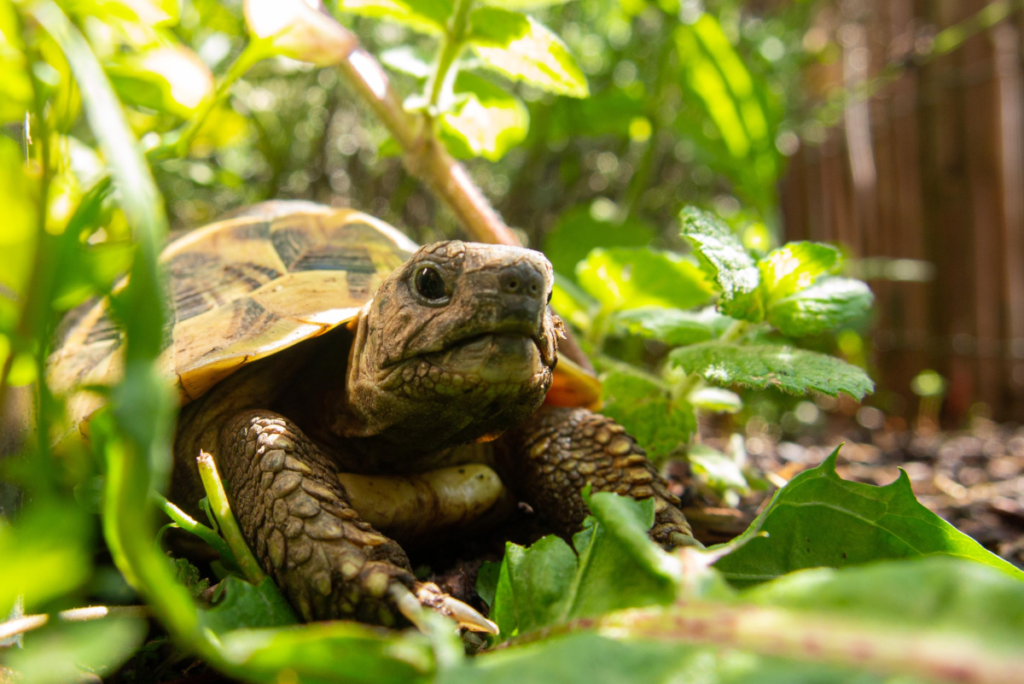
3. Mixed Substrates
3.1 Soil-Sand mix
A mixture of soil and sand can provide a versatile substrate option for indoor turtle enclosures. This combination allows for the benefits of both substrates, providing turtles with a natural texture, the ability to dig and burrow, and an appropriate level of moisture retention. The soil-sand mix can be customized based on the specific needs and preferences of the turtle species you are keeping.
3.2 Sand-Gravel mix
A combination of sand and gravel can be suitable for turtle species that require a more rocky or aquatic substrate. This mix offers a unique texture and provides opportunities for natural behaviors such as nesting, basking, and exploring. However, it is important to select gravel with smooth edges to prevent injury to your turtle.
3.3 Soil-Organic material mix
Mixing soil with organic materials such as peat moss or coconut coir can create a substrate that closely resembles the forest or wetland habitats that some turtle species inhabit. This mix provides a soft and moisture-retaining surface that promotes a healthy microbial environment. It also allows turtles to engage in natural behaviors such as digging and burrowing.
4. Aquatic Substrates
4.1 River rocks
For turtle species that spend a significant amount of time in the water, river rocks can be used to create an aquatic substrate. River rocks provide a natural and aesthetically pleasing environment that mimics the rocky riverbeds or freshwater habitats where these turtles are found. They also facilitate water filtration, as waste and debris can easily pass through the gaps between the rocks.
4.2 Gravel with aquatic plants
Creating an aquatic substrate using gravel and aquatic plants can offer an enriched environment for turtles that enjoy basking and swimming. The combination of gravel and live plants provides a natural and visually appealing habitat. The plants not only enhance the aesthetics but also serve as hiding spots, oxygenators, and algae inhibitors, contributing to the overall health of the enclosure.
4.3 Sand bottom with basking area
Using a sand substrate at the bottom of the enclosure, combined with a separate basking area, can provide a functional and visually appealing setup for aquatic turtles. The sand bottom allows turtles to exhibit natural digging behaviors, while the basking area provides a dry and elevated space for them to rest and bask under a heat source. This setup closely replicates the natural environment of turtles found in muddy or sandy riverbanks.
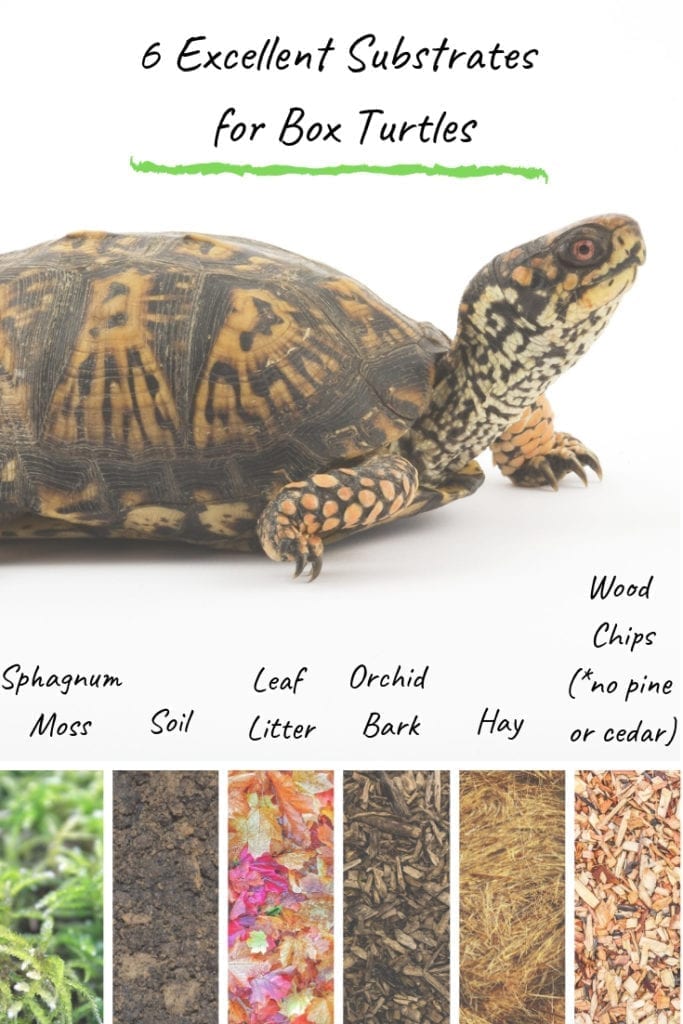
5. Temperature Considerations
5.1 Substrate’s effect on temperature regulation
The type of substrate you choose for your indoor turtle enclosure can impact the temperature gradient within the habitat. Some substrates, such as sand or soil, can retain heat and provide a warm spot for your turtle to bask or regulate its body temperature. On the other hand, substrates like gravel or river rocks can dissipate heat more easily and promote a cooler environment. It is important to consider the temperature preferences of your turtle species and choose a substrate that allows for the appropriate heat regulation.
5.2 Importance of thermal gradients
Thermal gradients are crucial for maintaining the overall health and well-being of your turtle. By providing a range of temperatures within the enclosure, your turtle can choose the ideal spot that suits its needs. The substrate plays a role in creating these thermal gradients, as different materials have different heat retention properties. Mixing substrates or providing separate areas within the enclosure with different substrates can help establish the necessary thermal gradients for your turtle.
6. Cleaning and Maintenance
6.1 Easy to clean substrates
When it comes to cleaning and maintenance, some substrates are easier to clean and replace than others. Substrates like reptile carpet and terrarium liners can be easily removed, washed, and replaced as needed. Paper towels are also a convenient option as they can be disposed of and replaced regularly. On the other hand, natural substrates such as soil or sand may require additional cleaning methods to remove waste and maintain hygiene.
6.2 Methods for keeping substrates clean
Regardless of the substrate you choose, regular cleaning and maintenance are essential for creating a healthy and pleasant environment for your turtle. This includes removing waste, uneaten food, and any debris that may accumulate on the substrate’s surface. For natural substrates, spot cleaning can be done by manually removing waste and regularly replacing soiled areas. For artificial substrates, a complete cleaning and replacement may be necessary. It is also important to monitor humidity levels and ensure proper ventilation to prevent the growth of molds or harmful bacteria.
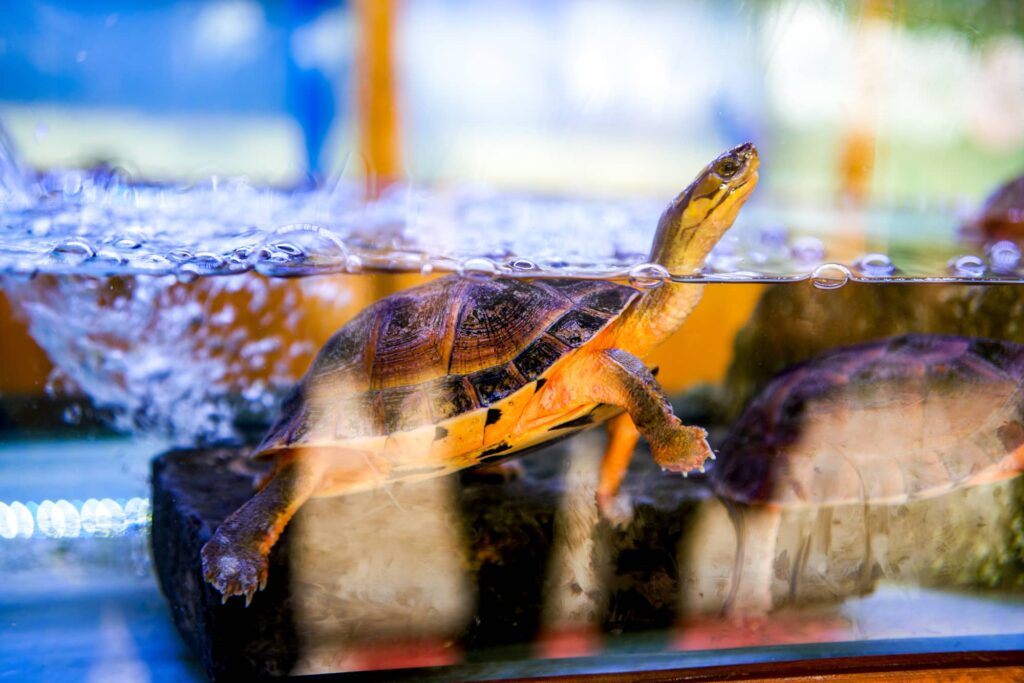
7. Health and Safety
7.1 Substrates that promote healthy behaviors
Choosing a suitable substrate can contribute to your turtle’s overall health and encourage natural behaviors. Substrates that allow digging, burrowing, and nesting promote mental stimulation and physical exercise, which are important for your turtle’s well-being. Natural substrates like soil, sand, or organic materials provide opportunities for these behaviors and can prevent boredom and stress-related issues.
7.2 Avoiding substrates that pose health risks
While some substrates offer benefits, others may pose health risks to your turtle. Avoid substrates that contain chemicals, toxins, or sharp edges that could harm your turtle if ingested or in contact with their skin. Additionally, some turtles are prone to ingestion of substrate, which can be dangerous and lead to gastrointestinal blockages. Consider the specific needs and behaviors of your turtle species when selecting a substrate.
8. Aesthetics and Enrichment
8.1 Creating a natural-looking habitat
The choice of substrate can greatly impact the overall aesthetics of your turtle enclosure. Natural substrates like soil, sand, or organic materials can create a visually appealing and natural-looking environment. They can be combined with rocks, logs, and plants to further enhance the habitat and create a realistic replica of your turtle’s natural habitat. By creating a visually pleasing enclosure, you can enjoy the beauty of your turtle’s environment while also providing them with a stimulating and enriching home.
8.2 Providing enrichment through substrate choice
The right substrate choice can also contribute to enriching your turtle’s life. Substrates that allow natural behaviors like digging, burrowing, or nesting provide mental stimulation and engagement for your turtle. By offering a variety of substrates or using mixed substrates, you can create different textures and opportunities for exploration. This can help prevent boredom and encourage your turtle to exhibit natural behaviors, leading to a healthier and happier pet.
9. Budget Considerations
9.1 Cost-effective substrate options
When considering substrate options, it’s important to take into account your budget. Certain substrates can be more expensive than others. For those on a tight budget, options like paper towels, reptile carpet, or terrarium liners can be cost-effective choices. These substrates are reusable, easy to clean, and typically last longer than some natural substrates. However, it’s important to balance cost-effectiveness with the specific needs and preferences of your turtle species.
9.2 Balancing cost and quality
While it’s tempting to opt for the cheapest substrate option, it’s crucial to consider the quality and suitability of the substrate for your turtle. Choosing a substrate that meets the natural habitat requirements and promotes natural behaviors should be the priority. Balancing cost and quality means finding a substrate option that is within your budget while still providing the necessary benefits and features for your turtle’s well-being.
10. Conclusion
In conclusion, the choice of substrate plays a vital role in creating a suitable and enriching environment for your indoor turtle enclosure. By understanding the importance of substrate, considering the benefits and considerations, and exploring the various options available, you can make an informed decision that promotes the health, well-being, and overall happiness of your turtle. Remember to consider the natural habitat of your turtle species, the ease of cleaning and maintenance, the temperature considerations, health and safety aspects, aesthetics and enrichment, and your budget when selecting the perfect substrate for your indoor turtle enclosure. With the right substrate, you can provide your turtle with a comfortable and engaging environment that closely resembles its natural habitat.
